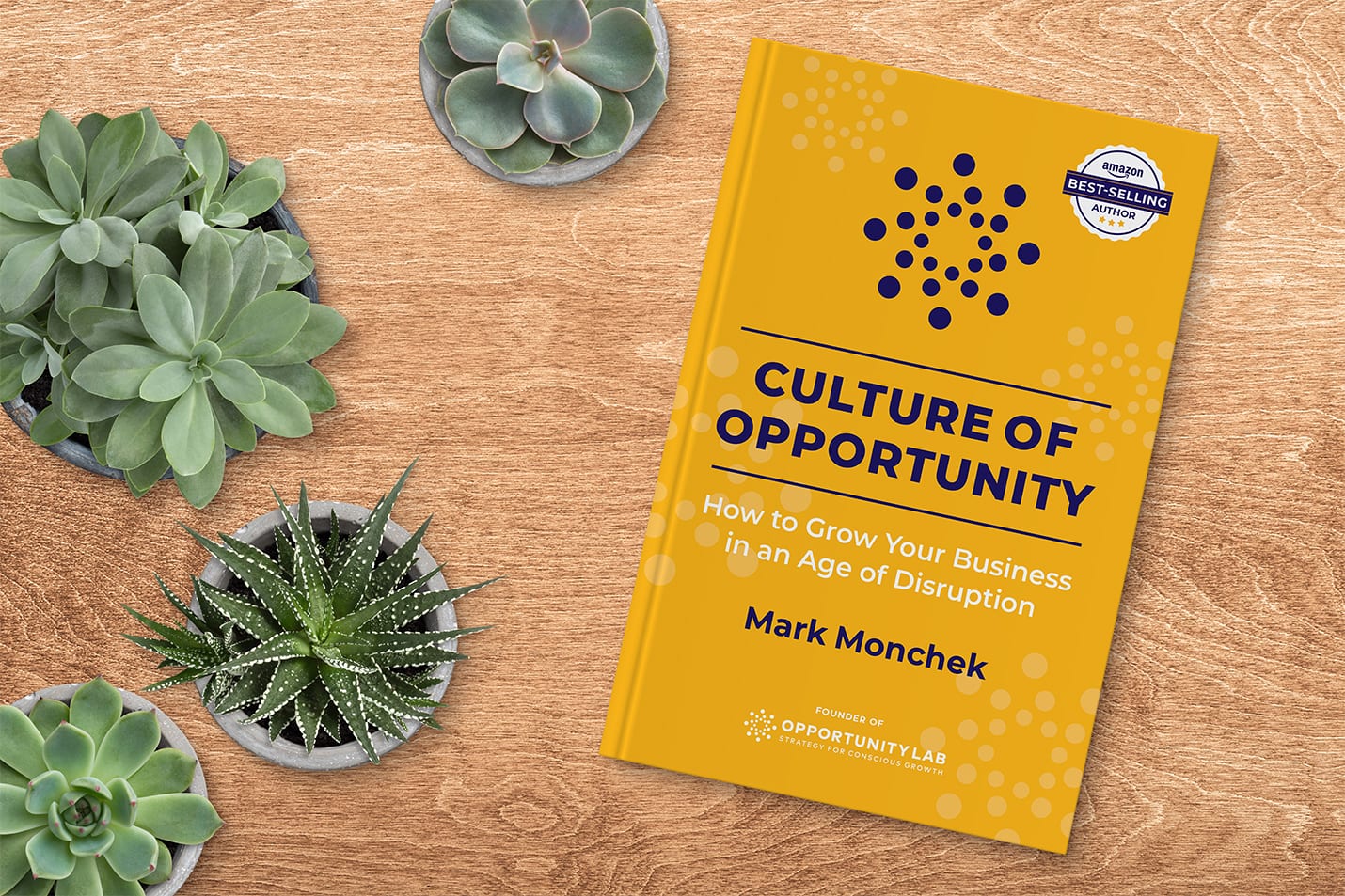The business world of today is full of buzzwords, trending concepts, breakthrough methodologies and schools of thought. One area that many are finding impactful and fascinating is the collection of concepts referred to as Design Thinking, Systems Thinking and Customer-Centric product and service design. Given the collaborative nature of our work as we focus on co-creating strategies with our clients, we have also been thinking about this relatively new language used for concepts at the core of effective strategy consulting.
As partners to our diverse client base, we’re leveraging many bodies of work and publications in our support to conscious business leaders and the success of their companies. One of the books we found ourselves referencing a few times this past year was The ONE Thing: The Surprisingly Simple Truth Behind Extraordinary Results by Gary Keller and Jay Papasan. So we asked ourselves: in regard to the customer-centric systems design, what is the one key thing a leadership team should focus on? Before we answer this question, let’s take a closer look at what the various terms – often used interchangeably–in this space actually mean. Do note that these concepts are open to interpretation as practices vary according to industry and application.Design Thinking – There is not one set definition of this term. A decade ago, Tim Brown – the CEO of IDEO – defined Design Thinking as “a discipline that uses the designer’s sensibility and methods to match people’s needs with what is technologically feasible and what a viable business strategy can convert into customer value and market opportunity” in his HBR article. Simply put, Design Thinking is a methodology for considering a diverse set of skills and opinions and questioning our preconceptions in order to develop most fitting innovative solutions to problems.
Systems Thinking – Again, while the concept of Systems Thinking isn’t new, the use and application of this terminology in business has gained wider popularity in recent years. An American systems scientist, Peter Senge, is often credited for his work in the integration of the General Systems Theory to the areas of management. In his renowned book, The Fifth Discipline: The Art & Practice of The Learning Organization, Senge discusses what makes successful organizations “Learning Organizations.” He refers to systems thinking as “The Fifth Discipline” – a discipline that integrates Personal Mastery, Mental Models, Building Shared Vision and Team Learning, all of which are essential to the existence of Learning Organizations. In his book, Senge uses an easy to remember analogy of “the broken mirror” to highlight that individual pieces of a mirror broken into pieces and glued back together will not provide the same reflection as a whole mirror. It is essential for leadership teams to examine situations and organizations holistically rather than break the organizational systems down into individual pieces.
Customer-Centricity – For an in-depth break down of Customer-Centricity concepts, one may turn to Peter Fader’s Customer Centricity: Focus on the Right Customers for Strategic Advantage. The idea behind Customer-Centricity is seemingly simple – an organization’s strategy as well as product or service offering is to be primarily guided through the understanding and empathy to their customers. Organizations must focus on delivering what is most needed by their key customer segments. Many companies, however, struggle with implementation while working to effectively analyze customer data. Fader’s book dives into the detail of what can help an organization make implementing this concept most successful.
Naturally, one may wonder about the practical application of Design and Systems Thinking in developing customer-centric strategies. As a service and thought leadership provider, The Opportunity Lab too is taking a closer look at our products in order to ensure that we take the above concepts into account to maximize our impact. With that in mind, I recently embarked on a journey of completing the Cornell University’s Customer-Focused Product and Service Design certificate program. The online program, offered through the University’s school of engineering, methodically guides students through each step of the design process with the technical precision needed for effective implementation in areas such as software development, hardware build-outs and building design. However, it is also open to leaders across sections. For example, Design and Systems Thinking can be carefully considered in definition and execution of Customer-Centric product offerings. So far, I’ve come to appreciate the importance of staying grounded and organized while considering high level system-wide ideas and views.
While the technical methodologies are key, what is the “One Thing” in using these concepts to drive impact and success? Our answer – culture. We have seen this time and time again in working with our clients as the leadership team begins to embody Customer-Centricity as a way of following conscious practices in their businesses and living our their values. However, customer-centric strategy can only be implemented in an environment of the right organizational culture. Deep care and empathy toward the customer needs to be embedded in all facets of the organization, rather than solely in areas like sales or marketing. Every step that each employee takes in their day-to-day operations should be put through the filter of Customer-Centricity and impact on the larger systems. We encourage our clients, colleagues and friends to continually question their environment and use the above mentioned approaches in defining what we contribute to the world.

